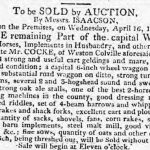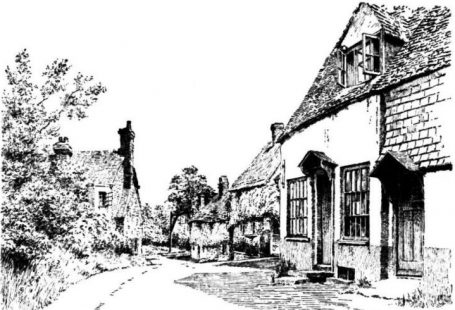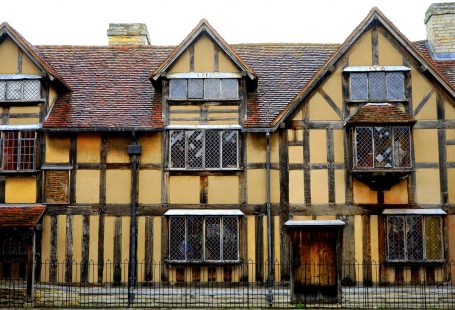This month marks the 75th anniversary of VE Day – the day that peace in Europe was finally declared. After nearly six years of conflict – how did the newspapers of the time report the momentous news? How did the people of Britain react?
Gloucestershire Echo | 8 May 1945
Using the front pages from the 8 May 1945, VE Day itself, we take a step back in time to discover just how the joyous news spread, and how it was reacted to.
Register now and explore The Archive
Search tip: you can filter your results to the exact day in order to find a headline from a specific date, and also limit your search to ‘Front Page’ only in order to view the front page headlines.
Premier Tells Great News
Many newspaper headlines at the time related to Prime Minster Winston Churchill’s ‘victory broadcast,’ which took place at 3pm on the 8 May. To many, this marked the official end of the war, and the beginning of VE Day.
Staffordshire Sentinel | 8 May 1945
Headlines included ‘Premier’s Broadcast to Mark End of War‘ (Newcastle Evening Chronicle), ‘Churchill’s Victory Broadcast‘ (Staffordshire Sentinel) and ‘Premier Tells Great News’ (Shield’s Daily News).
The Hull Daily Mail, like many of newspapers printed that day, included details of this ‘historic victory announcement:’
Yesterday morning, at 2.41, at General Eisenhower’s Headquarters, General Jodl, representative of the German High Command and of Grand Admiral Doentiz, designated head of the German State, signed an act of unconditional surrender of all German land, sea and air forces in Europe to the Allied Expeditionary Forces and simultaneously to the Soviet High Command… Hostilities will end officially at one minute after midnight to-night, Tuesday, May 8. But in the interests of saving lives the ‘Cease Fire’ began yesterday, to be sounded all along the front, and our dear Channel Islands are also to be freed to-day.
The Hull Daily Mail also highlights Churchill’s role in bringing an end to the conflict, labeling him the ‘Architect of victory.’ This is to be seen elsewhere in our newspapers, with the Prime Minister’s picture frequently occurring beside announcements of victory, and reports of him being ‘mobbed’ by excited crowds.
Churchill is mobbed by excited crowds | The Scotsman | 9 May 1945
The Shield’s Daily News gives an account of the Prime Minister heading to Buckingham Palace for a ‘VE-Day lunch with the King and Queen.’ A cheering and waving crowd ‘closed in around the Premier’s car,’ and the Prime Minister’s response was typically Churchillian:
Smiling and radiantly happy Mr Churchill gave the V sign time and time again to the crowd as he drove into the Palace.
Newspapers also adopted something of Churchill’s rhetoric in their reports, the Shield’s Daily News writing how ‘champions of freedom throughout the world are rejoicing that, after years of toil, blood, tears and sweat, Europe is liberated from the menace of the Nazi beast.’ Churchill, of course, had offered some five years before during his first speech as Prime Minster nothing ‘but blood, toil, tears and sweat.’ And he had prevailed.
This Is Victory Day
Meanwhile, other newspapers headlines chose to focus on the victory that had been won, reflecting the joyous celebrations that had begun to take place across the country and the world. The Northern Whig simply announces ‘Victory,’ whilst the headline for the Liverpool Daily Post reads ‘This is Victory Day.’ The excitement and joy can be felt in the Daily Mirror, which pictures Wrens and Allied soldiers celebrating in Trafalgar Square, accompanied by the simple exclamation ‘VE Day!‘
The Liverpool Daily Post pictures delighted factory girls, ‘Cheering, singing, and waving newspapers’ to signal their ‘delight at the coming of peace again.’ Meanwhile, in Cheltenham, people were ‘shaking off their traditional reserve and entering wholeheartedly into the nation’s celebrations‘ (Gloucestershire Echo).
Liverpool factory girls celebrate | Liverpool Daily Post | 8 May 1945
A popular method of celebration was the lighting of bonfires. The Daily Record reports how the children of Glasgow and Edinburgh ‘just went to it – and set their bonfires alight.’ And soldiers too on the front lit their own victory fires, the Newcastle Evening Chronicle reporting how ‘On the battlefronts bonfires and prayers greeted the day of victory, and there were festivities in every billet, and each soldier got a pint of beer with his dinner.’
Perhaps the most memorable victory celebrations were those to be seen in the capital. The Birmingham Daily Gazette gives a fantastic sense of the atmosphere in London, where crowds gathered outside Buckingham Palace, in Whitehall, Trafalgar Square and the West End:
All the time, American Flying Fortresses, flying singly or in threes, flew round and about, and British mosquitos raced across the sky, making wide turns and giving victory rolls round parliament and Buckingham Palace. Under hundreds of fluttering flags thousands of people lined all approaches to Piccadilly Circus. Pavements were packed with an expectant swaying mass of people. Service men from all parts of the Empire – soldiers, sailors and airmen from liberated countries, typists clutching Union Jacks, Red flags and the stars and stripes.
Allied servicemen and women celebrate in Coventry Street, London | The Sphere | 19 May 1945
The Daily Herald describes the fervour of the celebrations, writing how ‘joy-crazed crowds storm buses in London…a capital in the grip of V-fever.’ The Daily Mirror went one further, featuring a piece from a journalist actually in the crowds, telephoning in their report with cheers echoing all around them:
It was a high old time in Trafalgar-square last night. Everybody wanted to climb something. This party of Wrens and Allied soldiers celebrated by clambering on to the lions. Army policeman present like Nelson on his column turned a blind eye. London had a joy night. This is IT and we are going nuts! There are thousands of us in Piccadilly-circus. The police say more than 10,000 and that’s a conservative estimate. We are dancing the Conga and the jig and ‘Knees up, Mother Brown,’ and we are singing and whistling, and blowing paper trumpets. The idea is to make a noise. We are dancing around Eros in the black-out, but there is a glow from a bonfire up Shaftesbury-avenue.

An American airman commandeers a London bus | The Sphere | 19 May 1945
Under illuminated V for Victory signs, the crowds continue to sing well past midnight.
A Merciful Deliverance
And although these celebrations were joyous, they were also tempered by reflection, an acute awareness of what had gone before. For VE Day was not just greeted with bonfires, it was also met with prayers.
Coventry Evening Telegraph | 8 May 1945
Numerously quoted in newspapers of 8 May 1945 were the words of the Swedish Prime Minster: ‘It feels as if a long nightmare has lost its grip on us, and we can breathe again.’ Despite the joy felt at the coming of peace, it was impossible to forget the horrors of what had gone before.
This is also reflected in the Thanet Advertiser:
The day for which we have prayed at last has dawned. We give thanks to God for a merciful deliverance, mindful for the sacrifice that has brought sorrow and suffering to so many homes in this land which we love.
The duality of relief and grief is poignantly seen in the places which bore the scars of war. In Coventry, which saw many devastating German bombing raids, a ‘large congregation attended the thanksgiving service in Coventry Cathedral ruins.’ Adding another moving layer to this scene, a ‘thunderstorm broke over the city soon after the service had started,’ according to the Coventry Evening Telegraph.

VE Day Thanksgiving Service in Coventry Cathedral | Coventry Evening Telegraph | 8 May 1945
Meanwhile in Hull, another one of Britain’s ‘hardest hit cities,’ the people ‘celebrated the end of European hostilities to-day in a quiet and restrained manner, but with a profound feeling of thankfulness.’
The Hull Daily Mail describes how the arrival of peace on the 8 May was especially symbolic for the city:
it was…four years ago to the date Hull suffered one of the worst blitzes of the whole war period. It was on the night of May 7, 1941, and the following night, that the Nazi Luftwaffe concentrated its frightening wrath on the city and left behind a trail of death, fire, and devastation, the memory of which will take a long while to erase.
But despite this, ‘across all the streets and across the terraces which criss-cross the streets, lines upon lines of flags, bunting and streamers were hanging.’ Bonfires were lit, with ‘ten and 12-feet high pyres..common sights in all parts of the city.’
The Last All Clear
The newspapers in our collection show how VE Day was greeted with both joy, and reflection. The Manchester Evening News gives a good sense of this duality in describing the temperament of the crowd that had gathered in Albert Square. They were ‘joyous but not hysterical.’ And they reserved their biggest cheer ‘for what was hoped was the last all-clear,’ signalling the end of a conflict which had taken an unprecedented toll on civilian life.
Jubilant crowds in Manchester | Manchester Evening News | 8 May 1945

















